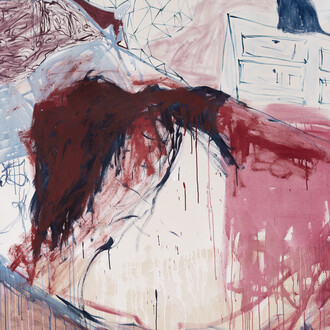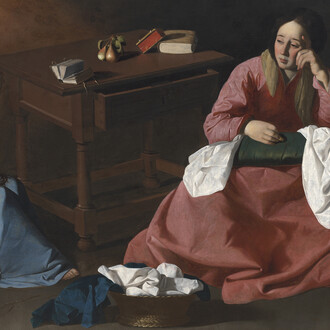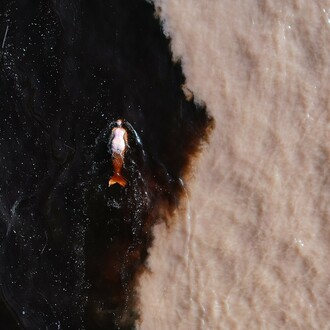Wonderland is an exhibition of Angela Lizon and Russell Webb, two artists who pursue Still Life’s quest for beauty and meaning in everyday objects through maximalism, minimalism, and humour.
Angela Lizon is a Bristol-based painter whose works reference Dutch 17th century flower paintings, embedded with arrangements of 20th century ceramic ornaments that in Angela’s world become vehicles for more sinister political narratives. Some appear as fairies reminiscent of the Victorian fascination with magic and fantasy, but far from effete imps, Angela’s fairies are muscular men in allusion to the bullish power politics dominating the international stage. Such fairies amongst flowers echo the paintings of Richard Dadd, hallucinations that captured the Victorian need for escape from a time of rampant industrialisation and social change. Angela’s use of mass-produced ornaments also references the kitsch of Jeff Koons, where Still Life’s humble everyday object became a token of globalised commercialisation. Her paintings knit these influences together, using an excess of ‘pretty’ things to ask quite how much distraction the viewer can take. Flowers have always had their hidden meanings, and here mirror the information overload of the digital age, where we are endlessly drawn to things we think we want to see but may not be what we need. Her large cat portrait epitomises the quandary: wreathed with flowers, reminiscent of Louis Wain, it pushes the boundaries of the sweet into the sickly. The need for beauty and escape in times of trouble is certain; Angela’s paintings ask the viewer how much they can take, and where their limits lie.
Russell Webb is a Brighton-based artist who creates trompe-l’oeil sculptures of everyday objects. Russell’s work sits firmly in the purest tradition of Still Life, where often overlooked items were presented as a focus of attention, even of meditation. This was particularly so in Spanish 17th century bodegones, where fruits, vegetables, and books were presented with an austerity that lent an almost mystical aura to the humdrum. Russell’s painted wood sculptures do much the same but with contemporary sensibility and humour. While his bunch of asparagus or plump pear could have been plucked straight from the 17th century, there is both empathy and romanticism in his work: his ‘Little Victories’, mandarin peels removed in one piece and kept as representing a small achievement for the day, extend the simplicity of their subject into daily life’s intimate experiences. Russell’s twigs are carved from curtain poles found discarded in the street, reworked under the banner of ‘Stick Surgery’ to give them a second life as their natural selves. Much like flowers, his rotten fruits may hint at symbolic transience, but they also have a slapstick playfulness to them, realistic conceits deceiving the unwitting. In Russell’s work the human being is both genius and fool, a talent that invests its labour in artistic folly, an ‘unnecessary’ act that is nonetheless one of humanity’s most defining activities.
















